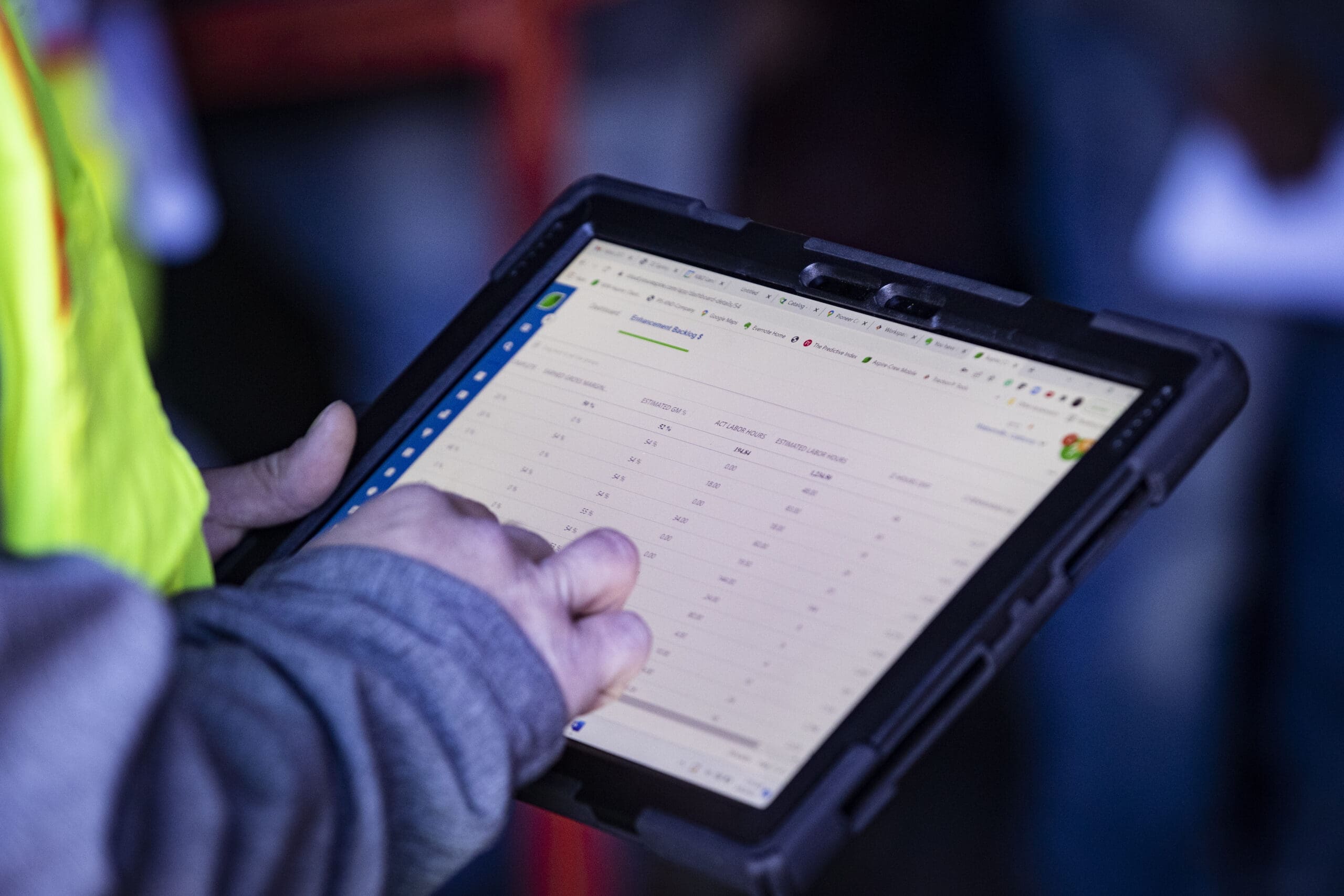
Just like how a piece of equipment is only useful if you operate it, business software can seem like a wasted expense if you aren’t using it to its full potential.
Landscape companies can struggle to be successful with their business software, either from a technical or cultural perspective.
“Companies kind of miss things when leadership isn’t 100% behind the technology and if they’re stuck in their old ways,” says Bryan Mours, owner of Mours Enterprises, LLC. “That cultural, ‘If it isn’t broke, why do we have to fix it?’ but in today’s day and age, technology is going to provide so much value to people that they don’t understand until they really start getting into it.”
Mours says he always tells owners to remember why they bought the software in the first place and consider what that software is intended for. For instance, he advises those using Aspire, which is production management software, to focus on its core function for the first 18 months to two years.
“When you’ve mastered the basics of the software system, that’s when you start getting into more of the bells and whistles,” Mours says. “They’re going to get a ton of value out of it if they just learn the basics. That’s going to provide more value than they could ever get for their dollar spent just from that. The bells and whistles are an add-on. It’s extra money that they’re getting out of the system.”
Review Your Processes
Investing in business software before clarifying and writing out your processes is like putting the cart before the horse. Mours says some owners can mistakenly believe they can sit back and do nothing once they have added new software to their business.
He says that often people don’t understand the logic or workflow of information that is necessary for software to perform properly. He says software is nothing more than button-pushing.
“The problem is they don’t ask the kind of who, what, where, when, why questions about why am I pushing this button?” Mours says. “Who’s going to affect what? Do I have my information correct in there? Where is it going to push that information? That’s kind of that workflow logic that’s built into software.”
The solution is to get in a room and talk through your workflow. Mours says technology is only one piece of the puzzle, and companies still need to build processes outside of technology.
“If they’re thinking the technology is just going to solve everything for them, it’s not going to,” Mours says. “I always say it’s going to be a paperweight on your desk. It’s really going to serve no purpose.”
Failure to document your processes means that everyone will end up using the software differently as no one knows the set way to do things. Without a clear set method, it becomes impossible to collect reliable data from your business software.
Mours says he’s seen cases where some companies discovered their salespeople are following a completely different workflow than the one the sales manager outlines. This can indicate the leadership team needs to do a better job of communicating what processes to follow.
“Technology is a great source of identifying trouble spots within a company,” Mours says. “The process is bad. What happens? I get bad data.”
Mours says you can work backward from that bad data and determine inconsistent processes in place.
When you review your processes, make sure you aren’t making your workflows too complex. What you’re looking for is a happy medium with high-level general processes. Mours says a good rule of thumb is to consider the value it will provide the company. While you don’t need a specific process for adding an item to the item catalog, there is value in tracking your renewals so you can generate renewal reports.
“I can write a million processes around just something like taking a new lead,” Mours says. “But is that necessary? And the answer to that question is no.”
Utilize Third-Party Consultants
Third-party consultants can help you marry technology with your processes. Mours notes that most landscape companies struggle with documenting their processes, as most simply have them in their heads.
Third-party consultants can help break down your different processes for your various segments including sales, production, purchasing, invoicing and more. Mours says the key is knowing who you are affecting downstream.
Mours explains that as a third-party consultant, his job is to train a few key people within the company to comprehend what he understands about the software.
“Once I get somebody within a company understanding what I understand, they can take the ball and run it,” Mours says. “That’s really all it is. These people are, we call them super users of the system, and they understand the logic and the workflow and the system so they can answer the questions. They can help build the processes and the training material necessary to make sure they’re utilizing the software to its fullest.”
When selecting a third-party consultant, Mours advises selecting one who has a working knowledge of your company’s business software. Otherwise, they’ll just help you dig a deeper hole.
He adds that you need to be willing to make changes to the business you’ll stick to if you’re going to take the time to hire a consultant.
“When you’re working with a consultant, always think about the fact that you always want to be moving forward,” Mours says. “You always want to be focused on constant improvement and constant improvement that’s going to stick in. Am I going to go backward on one of the 10 things you work on? Absolutely. You’re going to have some trips and falls. We’re not all 100% perfect.”
He says because landscape companies don’t have a working knowledge of the software, consultants can come in with the background and experience to say here’s how you need to change the way you’re thinking and doing things within your organization.
“The companies that have reached out are the companies that are going to succeed,” Mours says. “The companies that don’t reach out and think they can go it alone, in my opinion, are going to struggle more. They’re not going to fail, they’ll do okay, but they’re going to struggle more because it’s tough to learn these softwares.”
Analyze Your Data
Once you have documented your processes and aligned them with your software, regularly analyze your data. Mours says in some cases, you can be deceived by your data, so he always looks for exceptions.
He teaches users how to build exception reports, which can capture things that have fallen through the cracks.
In one case, Mours says a client believed they were selling $6 million in renewals, but through the exception report, they were able to see they’d actually had about $4 million in renewals and $2 million in new sales. As they began digging in further, they discovered some employees were copying the contract, instead of renewing it.
“When we built the process, people didn’t have a clear understanding of ‘Do I use copy?’ or ‘Do I use renew?’” Mours says. “The process clearly identifies when you renew a contract, this is what you need to do. This is the tag you need to add. This is the date you need to put.”
Even though the data may be correct, if you don’t understand how the data is getting there, it can identify when people aren’t doing their jobs right. These reports can also indicate when individuals aren’t completing work tickets and you can hold them accountable.




